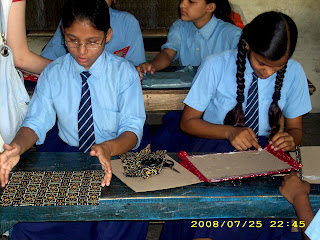
I made my first trip to Nepal back in 1990. I was a teacher at the Bank Street School for Children at the time, spending my summer break in South Asia, and I knew that a Bank Street family had recently returned to Kathmandu after several years of graduate study in the US. I called them when I reached the city, they graciously invited me to their home for dinner ... and the rest is history. At least it's become a big part of my own personal history. The Dixit family was frustrated by the educational options available at the time for their own young children. They had been thrilled with their Bank Street experience and recognized the potential for progressive education to make a difference in Nepal - not just for their kids but for the entire country. We talked that evening about the dream of starting a new school and the possiblity of working in collaboration with Bank Street to bring quality progressive education to the region. The Dixits have long been prominent in the Nepali intellectual/literary community and they were willing to commit time and resources (even their house!) to such a project. By the time I left to return to New York I was full of enthusiasm and energy and one of the first things I did when I got back there was approach Nona Weekes, the School for Children Dean, with my scheme for a Bank Street/Nepal connection. Nona thought it was a great idea and with her support I managed to secure Bank Street backing and funding for our first official consulting trip in 1991, the following summer. Nona and I traveled to Nepal, met with the Dixits, with other educators in Kathmandu, with members of the faculty at Kathmandu University and even with Nepal's minister of education. We brainstormed. We problemsolved. We planned and discussed. The Dixits worked tirelessly throughout ... And in 1992 the Rato Bangala School opened its doors to its first two classes of students in grades three and four.
There's much more to come on Rato Bangala, but in my next few posts I plan to shift focus a bit and give a very cursory sketch of the history and current state of education around South Asia. In order to understand just how revolutionary the accomplishments of the Dixits and other educational reformers in the region have been, it's necessary to understand the system within which they work.
Any other suggestions/ideas for future topics? I'd love to hear from you!
-Beth









